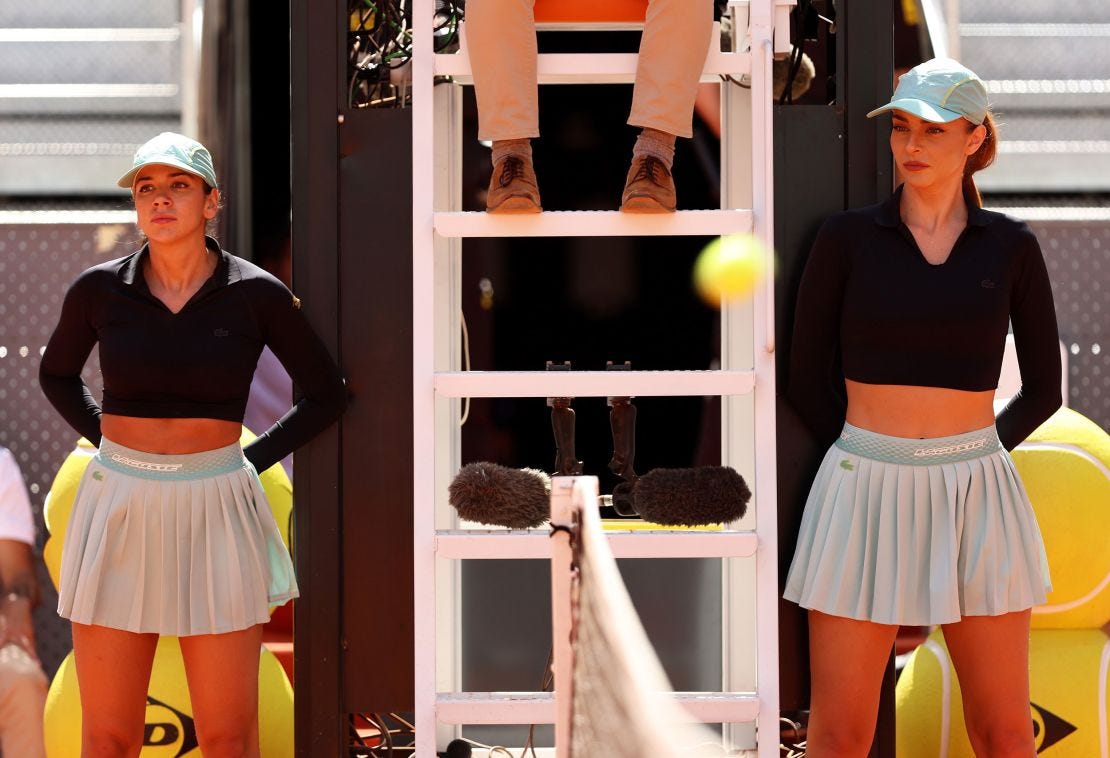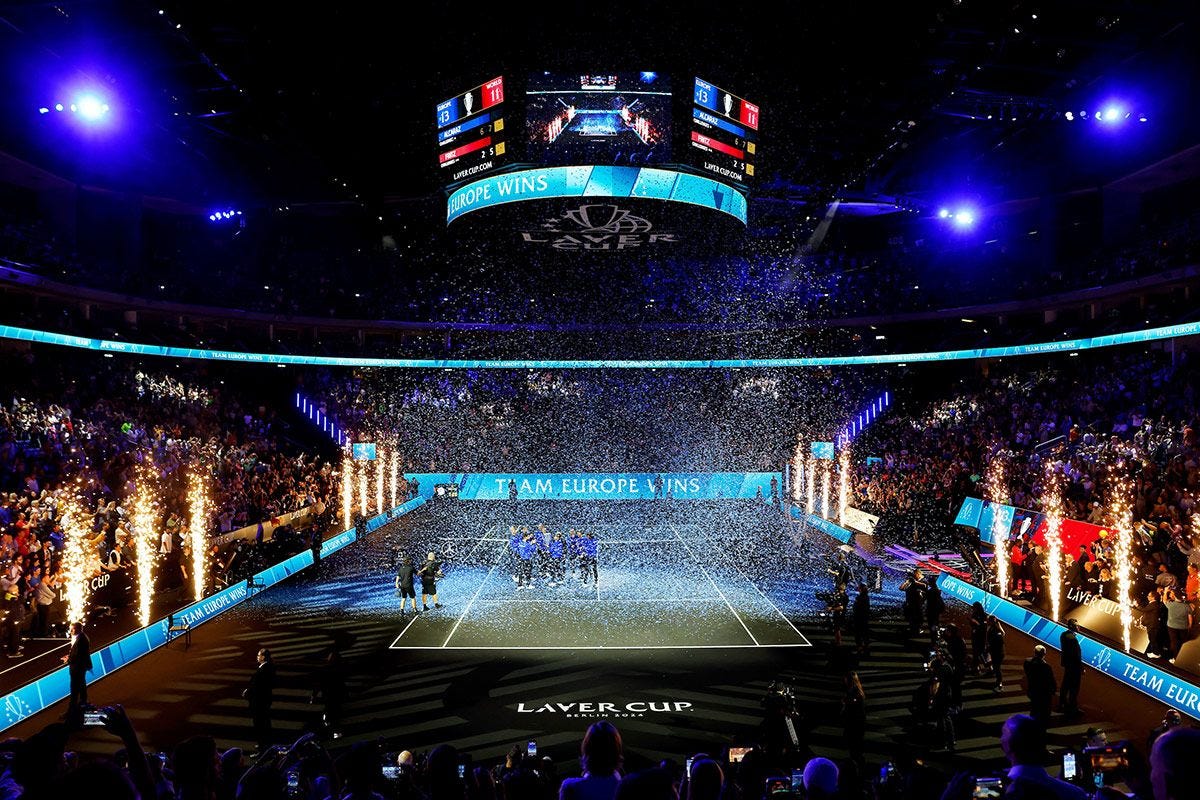Ben Navarro's emerging tennis empire
Emma Navarro's billionaire father signals a trend of the privatization of tennis tournaments
This is a lighter week for Ball Boy. The Miami Open just wrapped up making champions out of Jakub Menšík and Aryna Sabalenka. With the end of the Miami Open marks the first day of clay season. The next Masters 1000 tournament is the Rolex Monte-Carlo Masters, scheduled from April 6 to April 13, 2025, at the Monte-Carlo Country Club in Monaco.
With no major tournament taking place, the storylines seem a little dried up…except for one I found quite interesting.
Even though there are no Masters 1000s underway, there is a WTA 500 tournament happening in Charleston—a small city in South Carolina with around 155,369 citizens unexpectedly named the Credit One Charleston Open.
After a little research, I figured out the father of American and World No. 11, Emma Navarro, Ben Navarro, not only owns the Charleston Open (and half of Charleston’s real estate), he also recently bought the Cincinnati Open with eyes set on future tournaments in the U.S.
This led me to explore the privatization of tournaments and what it means for tennis.
The rise of an empire
The Navarro currently family owns the Credit One Charleston Open. It’s the oldest and biggest professional women’s tournament in the U.S., starting in 1973. The tournament draws many top 20 players and rising stars, especially as a key prep event for the clay season. Past winners include Martina Navratilova, Chris Evert, Steffi Graf, Venus Williams, Serena Williams, and more recently Madison Keys and Ons Jabeur.
Ben Navarro bought the tournament through his family investment firm and holding company, Beemok Capital in September 2018 and since invested approximately $50 million into renovating the tournament’s venue, Credit One Stadium, enhancing its facilities and overall experience.
On top of the Charleston Open, Navarro also bought the Cincinnati Open, a combined ATP Masters 1000 and WTA 1000 event and one of the most prestigious non-Slam tournaments in the world for more than $300 million. The businessman beat out bids from international buyers, including those who wanted to move the tournament to other cities or countries. After closing the deal, Navarro promised to keep the tournament in Cincinnati and invested heavily in modernizing the home of the tournament, Lindner Family Tennis Center. He also proposed a $150 million expansion and renovation plan for the tournament site as well as turning the tournament site into a year-round tennis and entertainment hub.
All that to say, the guy is loaded and increases to concern of billionaires influence in the sport of tennis.
Who owns tournaments besides billionaires?
Before private investors like Ben Navarro entered the tournament scene, professional tennis tournaments were owned by a mix of national tennis federations, entertainment companies, independent promoters, clubs, and nonprofits.
For example, the USTA previously owned the Cincinnati Open and still runs the U.S. Open. The FFT owns and operates Roland Garros and oversees many French events. The LTA runs Wimbledon and Queens Club Championships. Federations are more focused on grassroots development, slow moving, and dependent on sponsorship revenue. I personally like federations because they primarily focus on growing the sport of tennis—not running a tournament like a business.
However, there are exceptions such as IMG, a giant sports agency owning the Miami Open for years. Recently, a private equity firm is bidding $1 billion for the Miami Open and Madrid Open. Ion Țiriac, a Romanian billionaire and former pro, owned the Madrid Open for some time. Lastly, a media company named Meredith Corporation owned the Charleston Open before Navarro acquired it.
Private ownership represents a vibe shift
Private ownership could signify a trend of big capital and private ownership reshaping tennis tournaments and the sport itself.
What’s the downside of private ownership?
In Ben Navarro’s case, he seemingly has done good for Charleston and Cincinnati’s local economy, raising prize money for players, and revamping player and fan experiences. However, tennis tournaments are becoming investable cultural properties with other billionaires and hedge funs looking into exploring ownership.
For the fans…
With the privatization of these large tournaments we’re putting the future of the sport of tennis in the hands of the few instead of the hands of the many, making tennis far less democratic and even more elitist it has been in the past.
When a tournament isn’t owned by a federation, the tournament has to be run like a business who may prioritize short-term profits. This means ticket prices can rise, more corporate suites, fewer affordable seats, and hardcore fans getting priced out.
For the players…
Tournament owners could also begin to influence tour policies, rules, or scheduling outside of the ATP/WTA. Imagine a small, but lucrative tournament that offers higher prize money competing with the likes of the federation-owned tournaments who don’t have the same budget.
In the case of the Madrid Open, a joint ATP/WTA event, they have gone through glamorous upgrades, improved infrastructure, etc and improved prize money—specifically for men. Accusations of sexism and image control faced the tournament especially from top players like Coco Gauff who suspect the organizers don’t want women players speaking freely.
Lastly, tennis could also head toward an invite only model similar to golf (gag).
What’s the upside of private ownership?
Bringing in huge amounts of money can improve facilities, enhance technology, and the fan experience. We’ve seen it with Larry Ellison essentially saving Indian Wells in Palm Springs who brought in a long term vision and made the tournament the “Fifth Major” and a favorite on the tour for players and fans alike. Even though there are now $100,000 suites, VIP parking, and a Nobu on a main court so you can eat sushi and watch matches at the same time.
Privately owned events can also break the mold of traditional tournaments. Take the Laver Cup for example, founded by Roger Federer via his management company, plays in rotating host cities and not part of ATP or WTA rankings. The tournament has a team format with players from different countries, a black court with LED lighting, and is super dramatic compared to a tournament like Wimbledon. The Laver Cup is an example of a privately organized stylish tennis event for the younger audience that is more fan friendly.
🎤 Shoutouts
⏮️ My Last Post: How to beat Novak Djokovic in 2025
🤓 Suggested Read: BAGEL Magazine - BAGEL magazine captures tennis’s increasing diversity, influence on fashion and participation in popular culture.
🤓 Suggested Read: ASICS and A.P.C.'s Tennis Collection Is a Smash
🤓 Suggested Read: Is Nadal Academy prodigy Alexandra Eala the next tennis star? 🇵🇭







